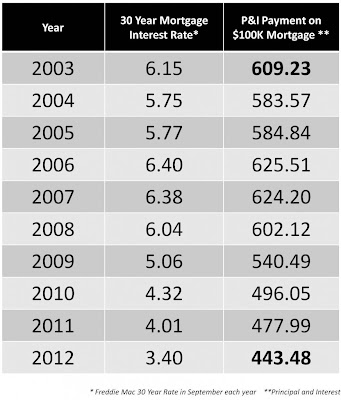With the real estate market heating up, many homeowners are waiting for home values to increase before putting their homes up for sale. Yet never has playing the waiting game on home price
appreciation represented a more significant financial gamble than it does right now.
Shadow Inventory
It’s rolling the dice against the
threat of a shadow inventory of distressed properties like foreclosures and
short sales being released for sale at prices below market value in the near future.
Because we can reasonably predict this continued occurrence through Notice of Default filings at recorder’s offices, this distressed inventory poses a significant
threat to keep comparable home prices down. In fact, it has been the steady sale of
distressed properties that has kept prices from appreciating substantially
despite recently tremendous buyer demand.
Low Inventory Means More Competition
Also, the fact that there are
currently an overwhelming number of buyers actively looking to purchase a
historically low number of homes for sale frequently creates buyer bidding wars that
generate purchase prices above market value and other contractual terms that are favorable to sellers. But again, this buying frenzy could easily be
subdued if this anticipated wave of distressed property once again saturates
the market or if interest rates increase as expected.
Interest Rates Will Increase
Current mortgage interest rates are hovering at some of the lowest levels in history. Over the past few years the U.S.
Federal Government has spent trillions of dollars to keep mortgage rates
artificially low in order to boost the housing sector. Now that we are witnessing an identifiable
real estate recovery and the general population becomes more concerned about
the growing U.S. national debt, the likelihood that more U.S. dollars will be spent to
keep rates this low is slim.
Remember that after homeowners sell their home, they quickly transform into home buyers again. Buyers often place
too much importance on the price of a home, and not enough emphasis on a home’s actual cost. The graphic below illustrates how much a $100,000 home’s monthly payment
increases by just slight increases in interest rates. Now imagine a $200,000 or
$300,000 home, with payments being made over the typical term of 15 or 30
years loan.
With this in mind, a buyer that
waits too long to purchase a home could easily end up paying $100,000 more over
the life of a loan if interest rates increase. That’s a hefty price to pay for indecision.
After all, most people decide on a purchase based on their ability to make monthly
mortgage payments on the home, so why not focus on the cost that matters more than the home's sale price?
It All Comes Out in the Wash
Even if a home seller patiently waits for the shadow inventory to sell through and endures an increase in interest rates until home prices have significantly appreciated, is there really a financial gain? Doesn't the seller that waits for housing prices to increase ultimately have to turn around and purchase a home in a market with higher prices and interest rates? Any gain realized by waiting is quickly nullified upon the purchase of a another home, so it all comes out in the wash anyway.

